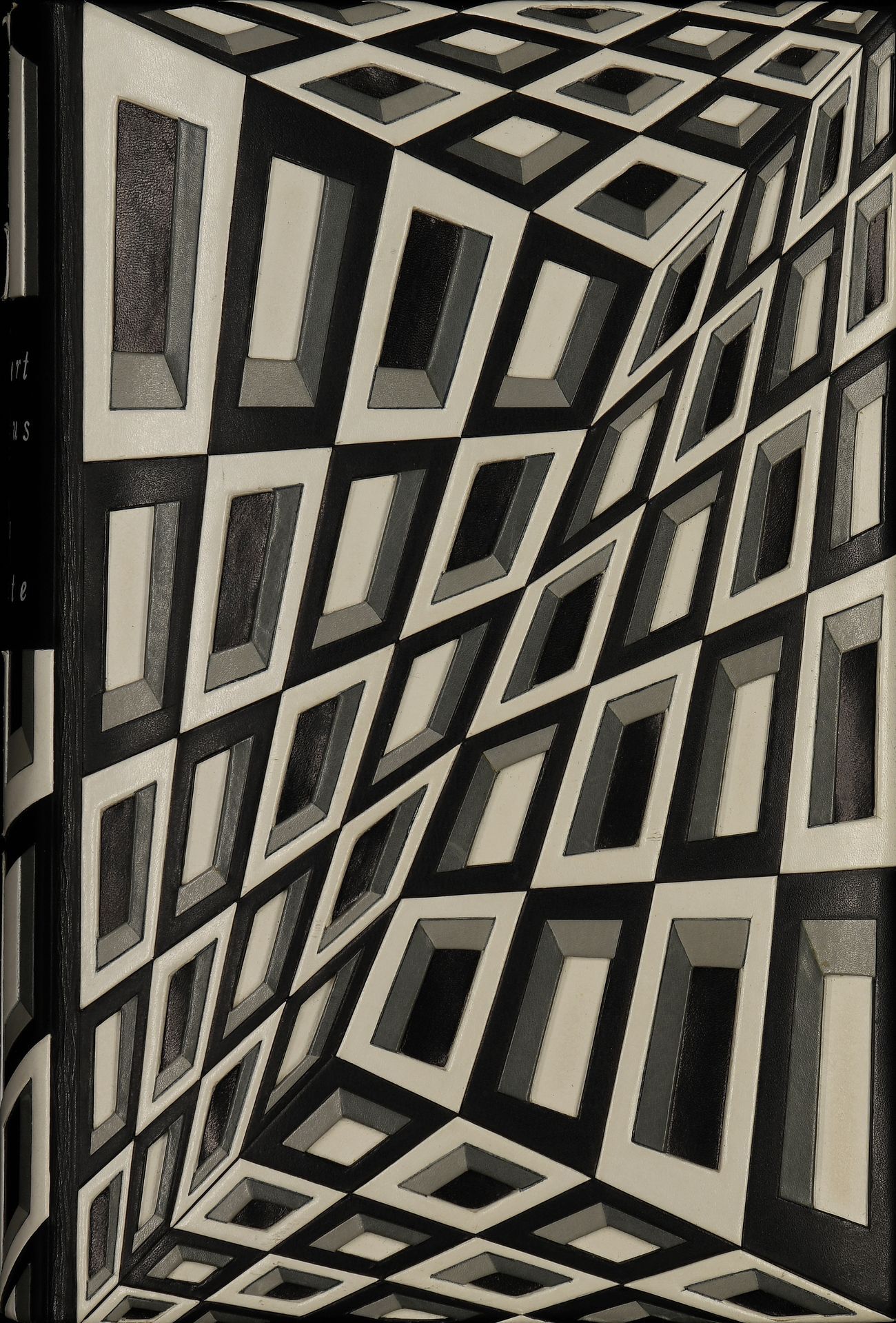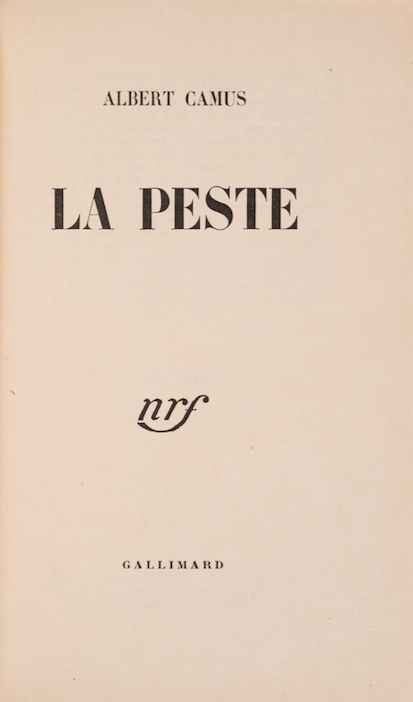La peste (La Peste)
Albert Camus
1947
Paris
8vo (190 x 130 mm)
Legatura del 1970 in vitello nero con sottili inserti in vitello bianco e inserti di spessore maggiore in vitello nero, bianco e grigio con disegno geometrico trompe l’oeil di tessere e finestre ritagliate in modo da dare l’impressione che si allontanino dall’osservatore. Rimbocchi impressi con una linea dorata. Cucitura a cinque nervi incassati, allacciati (difficili da vedere). Dorso liscio con inserti in vitello grigio e bianco che riprendono il motivo delle coperte; titolo impresso in bianco. Capitelli di seta bianca, ad anima doppia con un nodino; le estremità delle anime sembrano essere state inserite sotto le cerniere. Tagli dorati. Cerniere in pelle nera.Risguardi in pelle scamosciata grigia (vitello rovesciato); il rimbocco di piede della coperta anteriore è firmato: «P.L. MARTIN»; sul rimbocco della coperta posteriore si legge: «1970»; una carta di guardia libera in pelle scamosciata grigia(rinforzata) seguita da tre carte di guardia libere. Etichetta con «JP/G» [Jean-Pierre Guillaume]; etichetta della mostra: «Exposition P. L. Martin.Claud Guérin l’Artisan du livre 1978». Un analogo motivo geometrico trompe l’oeil in bianco e nero sulla legatura di A. Camus, La Chute, Parigi1956, risulta schedato come n. 56 alla mostra dedicata a P. L. Martin presso la Bibliotheca Wittockiana di Bruxelles nel 1987. Brossura editoriale all’interno. 337-(3) pagine numerate.
Gallimard
Parigi
Catalogue N. A484
Inv. 0540
Bibliography
Albert Camus, La peste, Gallimard, Paris 1947
This binding was made in Paris and designed by Pierre-Lucien Martin. Martin was born in 1913 in Denault in Nièvre. Unlike Pierre Legrain and Paul Bonet, he was trained as a binder, as well as a designer. He attended the École Technique Estienne from 1927-31 and was taught binding by Charles Chanat and design by Robert Bonfils. In 1931 he started working in the atelier of Jean Duval and then worked for several other binders; In 1936 he worked with A.-J. Gonon, in whose atelier he became familiar with contemporary poetry, painting and fine publications. In 1940 he set up his own atelier in Rue Saint-André-des Arts. After World War II he branched out in more original work and in 1948 won the 1er Prix de la Reliure Originale.
He had come away from copying earlier styles (as had been demanded by some of his clients) and started to use geometrical shapes and juxtapositions of colour and form, often using lettering and creating what looked like three-dimensional designs, either with the help of onlays and mosaics or just with tooling. As demand for his work grew, he no longer bound himself but employed several forwarders, such as René Desmules, and used finishers, such as André Jeanne and Charles Collet, to carry out his designs. All three had also worked for Pierre Legrain. He considered the binding essentially as the entry to the text, its purpose being to prepare the reader for what is to come. For illustrated books he wanted to achieve a synthesis between the impact of the author and the ideas and style of the illustrator.
Mirjam Foot


